 The bowl above is, for now at least, the final entry in my gratuitous khao soi series. I had eaten at this same khao soi shop nearly a decade ago when a friend and I were doing some exploring in Doi Phu Kha National Park in Nan. After a few days in the jungle, we eventually emerged at Ban Bo Klua, and at what appeared to be the town’s only restaurant found both food and accommodation. I don’t recall what we thought of the khao soi then, but I was sure I wanted to eat it again this time, the opportunity being a perfect nostalgic bookend to my seven-part epic khao soi feature.
The bowl above is, for now at least, the final entry in my gratuitous khao soi series. I had eaten at this same khao soi shop nearly a decade ago when a friend and I were doing some exploring in Doi Phu Kha National Park in Nan. After a few days in the jungle, we eventually emerged at Ban Bo Klua, and at what appeared to be the town’s only restaurant found both food and accommodation. I don’t recall what we thought of the khao soi then, but I was sure I wanted to eat it again this time, the opportunity being a perfect nostalgic bookend to my seven-part epic khao soi feature.
Richard and I arrived at the shop at an early hour and I asked the vendor (the same woman from 10 years ago) if it was open. ‘Of course, open, yes, yes, we’re open. Sit down,’ she replied in an exceedingly enthusiastic, confident manner. Her attitude immediately made me suspicious; in Thailand if someone zealously confirms something, it most likely means it’s untrue.
After a minute or two she brought out our bowls, and Richard and I dug into what would be the worst bowls of khao soi either of us have ever encountered. For starters, the broth was just a step above lukewarm, and appeared to be little more than coconut milk with a pinch of curry powder. The chicken, which along with the broth appeared to be left over from the previous day, was nonetheless severely undercooked and alarmingly pink in parts. But the worst thing about the khao soi confirmed my initial suspicion; as I stirred the contents, I discovered that this bowl of noodles had no noodles.
‘There are no noodles in this khao soi,’ I told the woman.
‘Oh yes,’ she replied without hesitating, ‘the water hasn’t boiled yet so I can’t cook the noodles. I just used the deep-fried crispy noodles instead.’
As anybody who’s eaten khao soi knows, this is not an acceptable substitute.
‘When I asked you if you were open, you said that you were ready to go,’ I argued.
‘I am ready. Do you like the khao soi?’
I was not getting through. Clearly this woman just wanted to sell at any cost. When we told her, quite frankly, that the chicken was undercooked and that we did not like the khao soi, she asked, without a hint of irony, if we wanted to buy another two bowls.
Don't eat here. I'm providing the map below more as a warning than a recommendation.
Khao Soi
Ban Bo Klua, Nan
View Larger Map
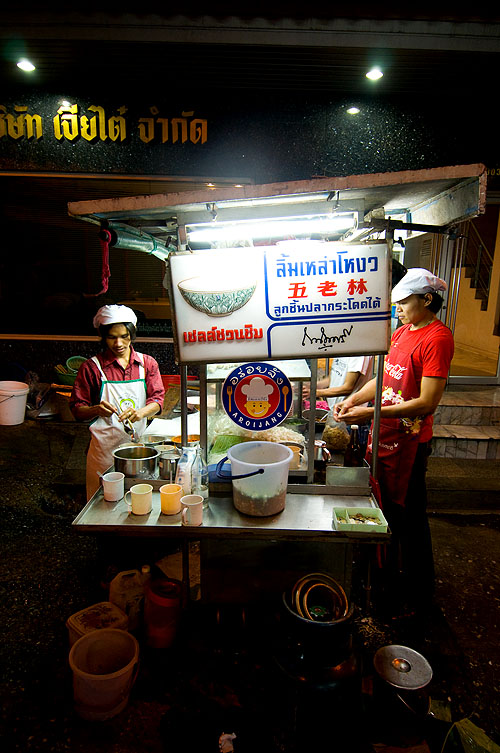 The tongue-twistingly difficult name of this street stall is Chinese in origin, appropriate for a stall on the outer edges of Bangkok’s Chinatown. I was escorted there by David Thompson, who knows the neighbourhood a lot better than I’d expected.
The tongue-twistingly difficult name of this street stall is Chinese in origin, appropriate for a stall on the outer edges of Bangkok’s Chinatown. I was escorted there by David Thompson, who knows the neighbourhood a lot better than I’d expected.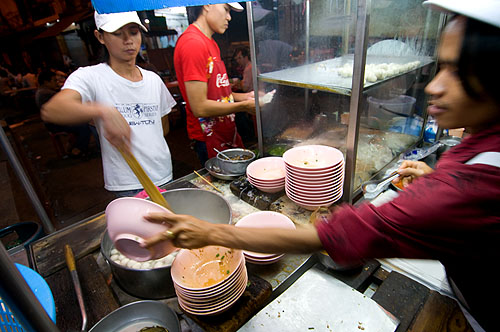
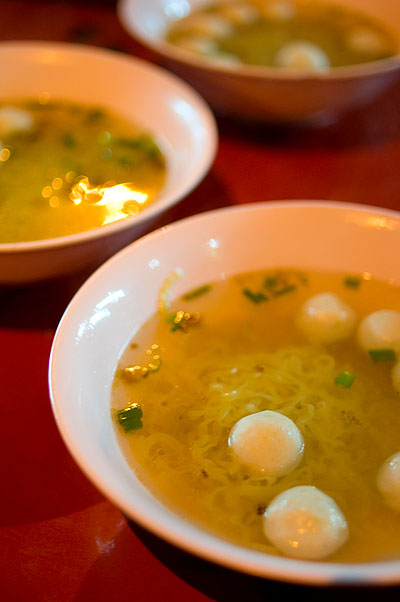












 The title of this post is a take on the oft-cited 2005
The title of this post is a take on the oft-cited 2005 





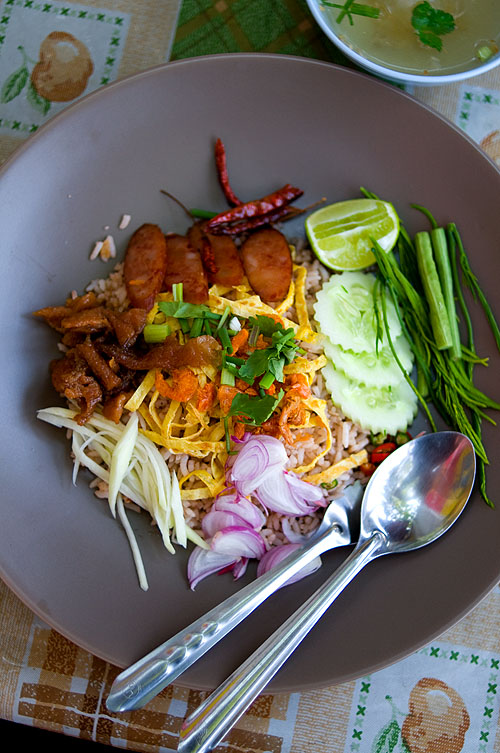 Lying just steps from the famous backpacker district of Th Khao San, you'd think that there would be much in the way of authentic Thai food on Th Phra Athit. But there are actually some pretty interesting places to eat. My most recent find is a tiny streetside stall that serves only three dishes, the most famous of which is khao khluk kapi, rice cooked with shrimp paste and served with a variety of delicious toppings -- a dish mentioned
Lying just steps from the famous backpacker district of Th Khao San, you'd think that there would be much in the way of authentic Thai food on Th Phra Athit. But there are actually some pretty interesting places to eat. My most recent find is a tiny streetside stall that serves only three dishes, the most famous of which is khao khluk kapi, rice cooked with shrimp paste and served with a variety of delicious toppings -- a dish mentioned 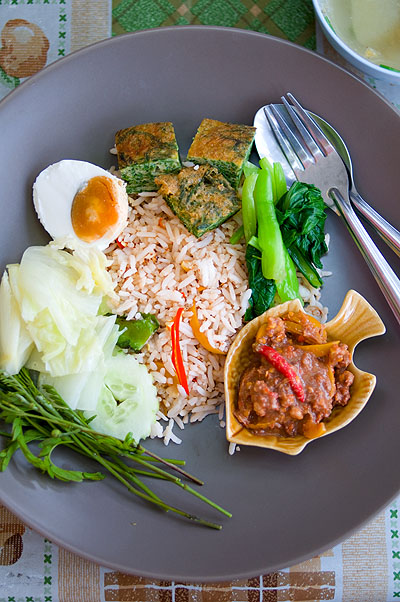
 Lephet thoke is a popular Burmese dish based around pickled tea leaves. The sour, slightly bitter leaves are mixed with shredded cabbage, sliced tomatoes, crunchy deep-fried beans, nuts and peas, a splash of oil and pungent slices of chili and garlic. The dish is versatile: it can be a snack, an appetiser or a palate cleanser. Allegedly it's also a stimulant; a Burmese waiter in Mae Sot, Thailand, told me that I'd be up all night if I ate too much lephet thoke.
Lephet thoke is a popular Burmese dish based around pickled tea leaves. The sour, slightly bitter leaves are mixed with shredded cabbage, sliced tomatoes, crunchy deep-fried beans, nuts and peas, a splash of oil and pungent slices of chili and garlic. The dish is versatile: it can be a snack, an appetiser or a palate cleanser. Allegedly it's also a stimulant; a Burmese waiter in Mae Sot, Thailand, told me that I'd be up all night if I ate too much lephet thoke.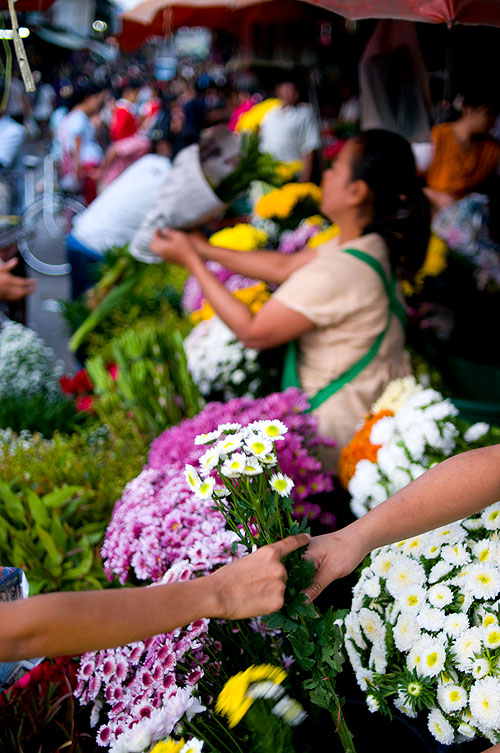 At Mae Sot's morning market, Tak
At Mae Sot's morning market, Tak 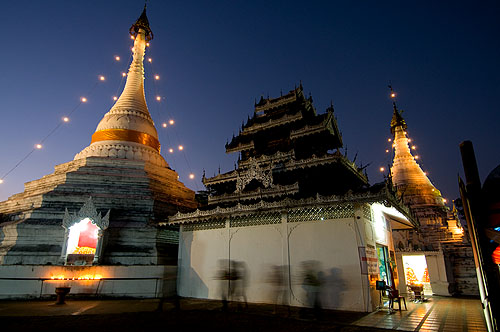
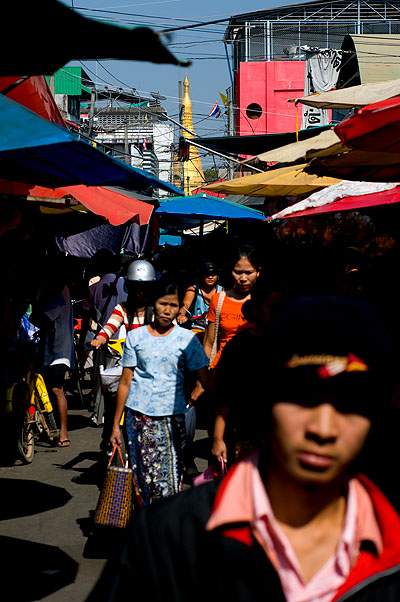

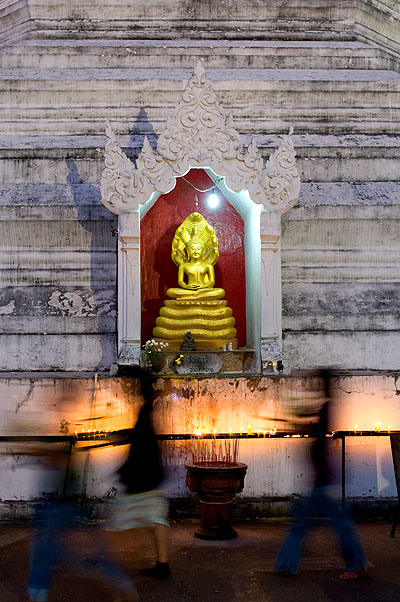
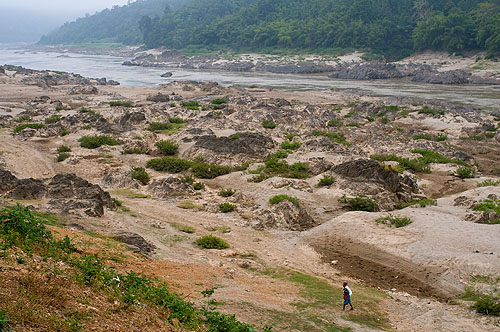
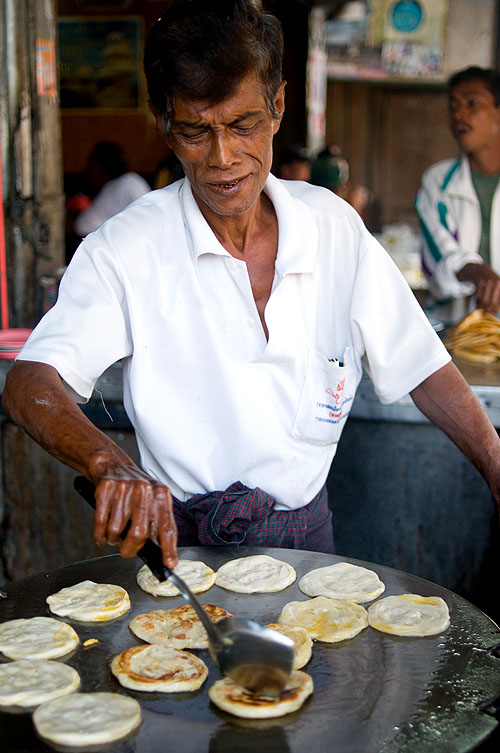 Mae Sot, a bustling city near the Burmese border in Tak province is mostly populated by Burmese refugees. Many of those who live in town are Muslim, and have had a huge influence on the city's food scene. In particular, along the street that runs south of the city's main mosque, you'll find several Burmese/Muslim-owned teashops:
Mae Sot, a bustling city near the Burmese border in Tak province is mostly populated by Burmese refugees. Many of those who live in town are Muslim, and have had a huge influence on the city's food scene. In particular, along the street that runs south of the city's main mosque, you'll find several Burmese/Muslim-owned teashops: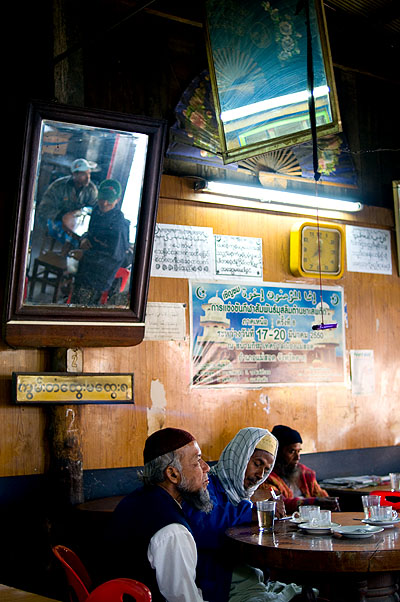
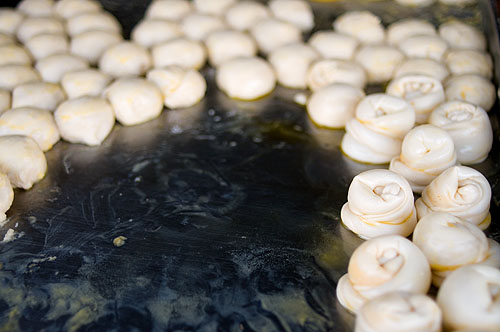
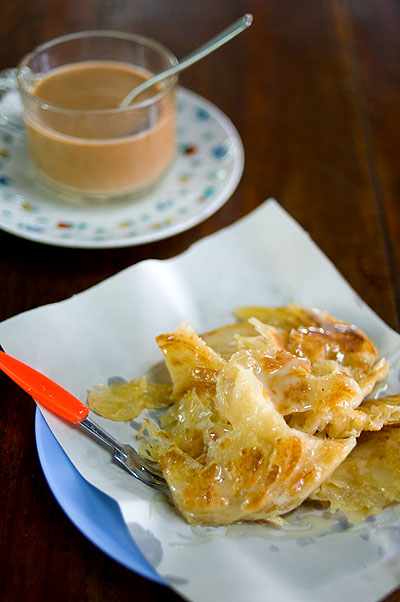
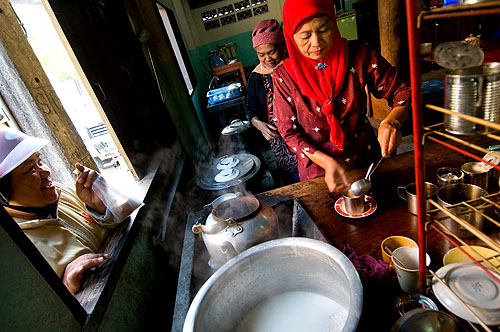
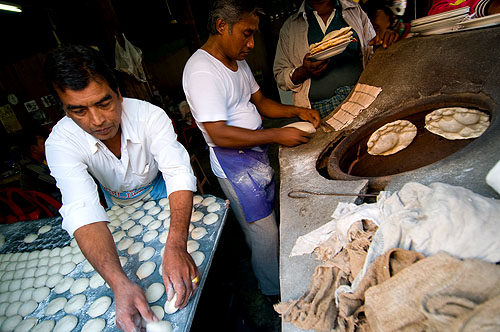
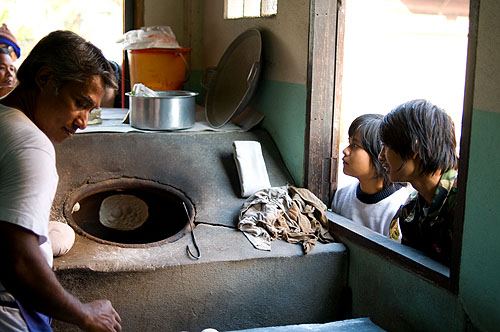
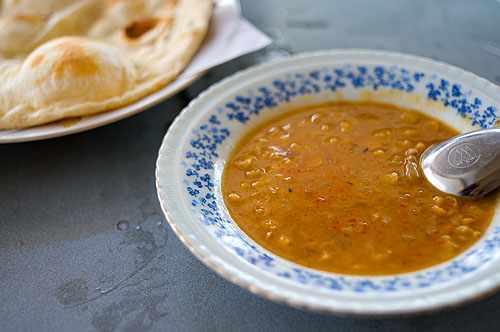
 The name of this dish is, I believe, dialect for, 'rice with meat'. It's a Shan dish that one finds all over northern Thailand, but is best near its traditional homeland.
The name of this dish is, I believe, dialect for, 'rice with meat'. It's a Shan dish that one finds all over northern Thailand, but is best near its traditional homeland.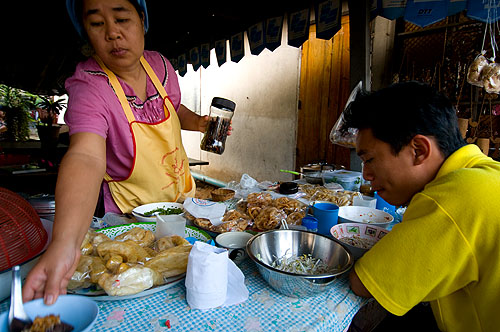
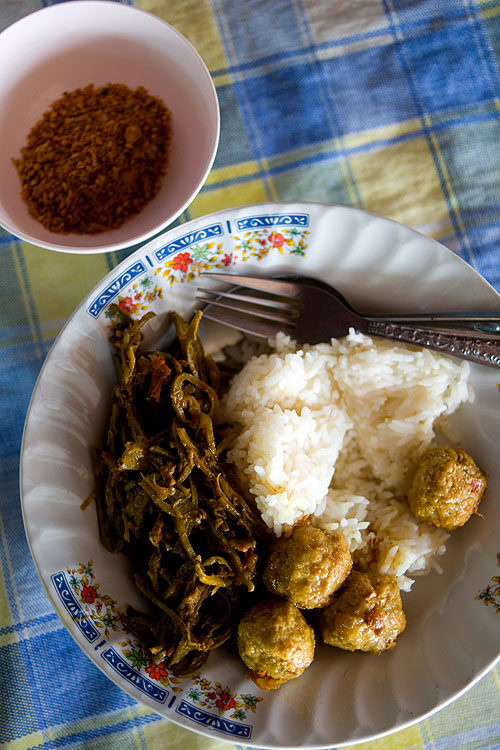 Mae Sri Bua is a Shan restaurant in Mae Hong Son. The owner/chef, Mae Sri Bua is a native of the city and has been at this a long time. She has trouble walking nowadays, but still manages to make some pretty good eats.
Mae Sri Bua is a Shan restaurant in Mae Hong Son. The owner/chef, Mae Sri Bua is a native of the city and has been at this a long time. She has trouble walking nowadays, but still manages to make some pretty good eats.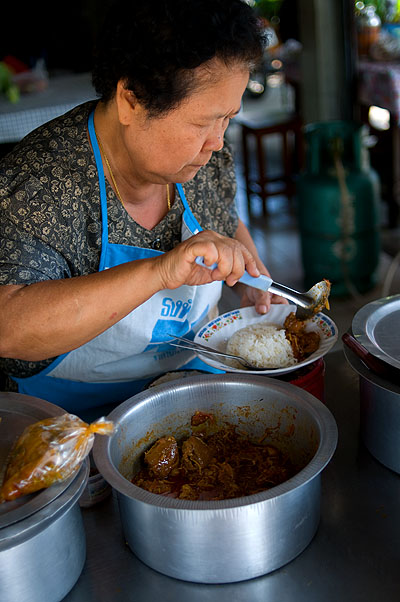
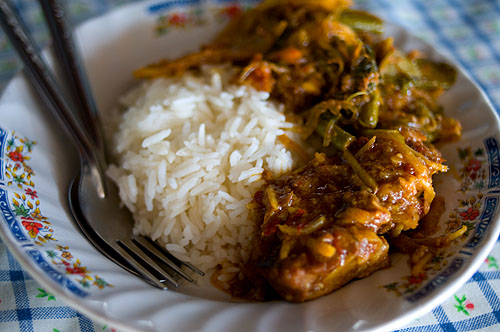
 Sesame is an important item in the traditional diet of the Shan people in Mae Hong Son. In addition to the
Sesame is an important item in the traditional diet of the Shan people in Mae Hong Son. In addition to the 





 I'm usually not a huge fan of Thai desserts, but have really been enjoying the sweet stuff up here in Mae Hong Son, northern Thailand. The majority of people in this province are Shan, also known as Thai Yai (or Tai), and have a different set of sweet stuff than the Thais. Essentially, they've made due with the limited set of ingredients they have at hand: rice (regular or sticky, or sometimes wheat flour), sesame and sugar, often from sugarcane (rather than from palm sugar, as is typically the case with southern Southeast Asia).
I'm usually not a huge fan of Thai desserts, but have really been enjoying the sweet stuff up here in Mae Hong Son, northern Thailand. The majority of people in this province are Shan, also known as Thai Yai (or Tai), and have a different set of sweet stuff than the Thais. Essentially, they've made due with the limited set of ingredients they have at hand: rice (regular or sticky, or sometimes wheat flour), sesame and sugar, often from sugarcane (rather than from palm sugar, as is typically the case with southern Southeast Asia).



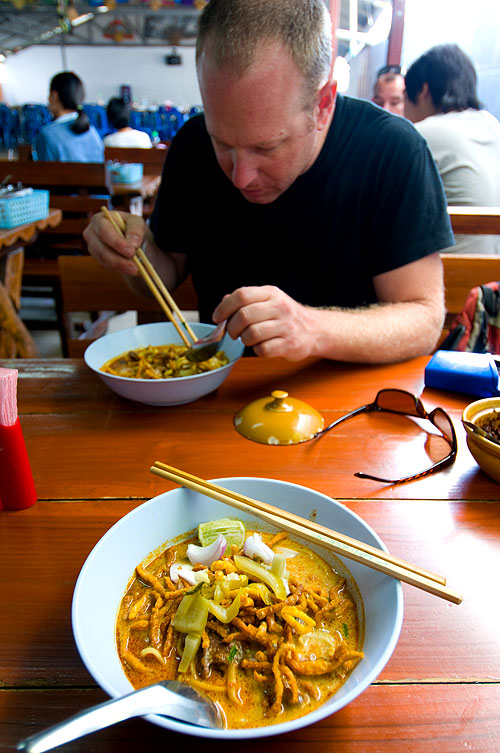 As if I haven't been going on about it enough already, I have more exciting khao soi-related news. I was lucky enough to meet up with Andy Ricker of
As if I haven't been going on about it enough already, I have more exciting khao soi-related news. I was lucky enough to meet up with Andy Ricker of 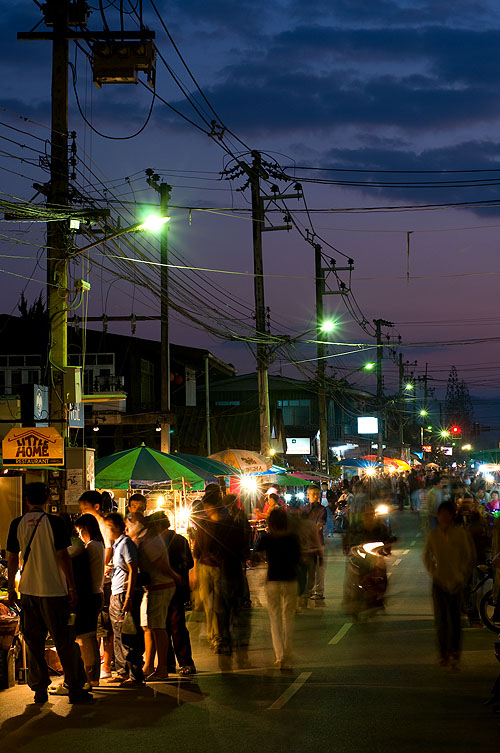 Main street, Pai, during the tourist season, Mae Hong Son, northern Thailand
Main street, Pai, during the tourist season, Mae Hong Son, northern Thailand 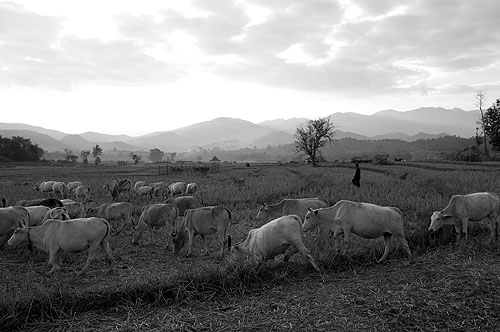
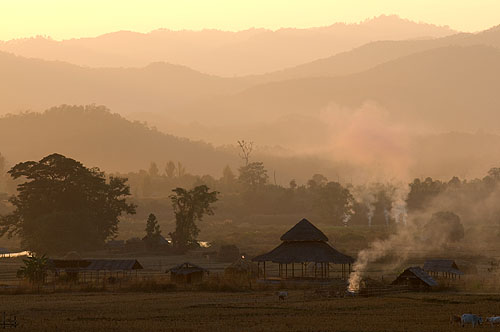
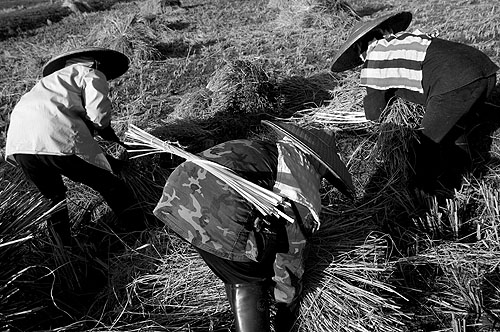
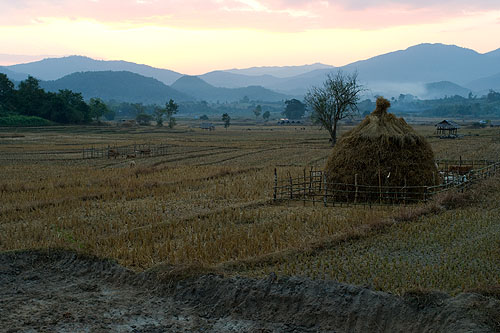
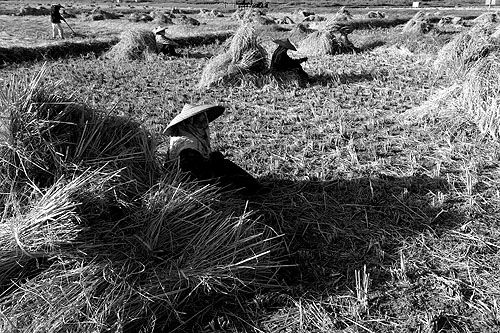
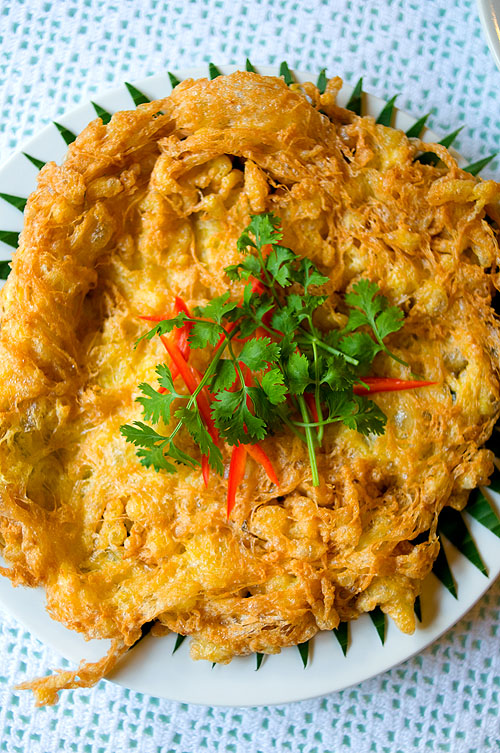

 then stop by my exhibition, The Last Chinatown, which begins tomorrow, December 6th, at
then stop by my exhibition, The Last Chinatown, which begins tomorrow, December 6th, at 

 well, I'm not exactly sure what, but it certainly is in the press lately. First of all,
well, I'm not exactly sure what, but it certainly is in the press lately. First of all,  When I was up in Chiang Rai I had excellent northern-style noodles at a place called
When I was up in Chiang Rai I had excellent northern-style noodles at a place called 

 The bowl above is, for now at least, the final entry in my gratuitous khao soi series. I had eaten at this same khao soi shop nearly a decade ago when a friend and I were doing some exploring in Doi Phu Kha National Park in Nan. After a few days in the jungle, we eventually emerged at Ban Bo Klua, and at what appeared to be the town’s only restaurant found both food and accommodation. I don’t recall what we thought of the khao soi then, but I was sure I wanted to eat it again this time, the opportunity being a perfect nostalgic bookend to my seven-part epic khao soi feature.
The bowl above is, for now at least, the final entry in my gratuitous khao soi series. I had eaten at this same khao soi shop nearly a decade ago when a friend and I were doing some exploring in Doi Phu Kha National Park in Nan. After a few days in the jungle, we eventually emerged at Ban Bo Klua, and at what appeared to be the town’s only restaurant found both food and accommodation. I don’t recall what we thought of the khao soi then, but I was sure I wanted to eat it again this time, the opportunity being a perfect nostalgic bookend to my seven-part epic khao soi feature.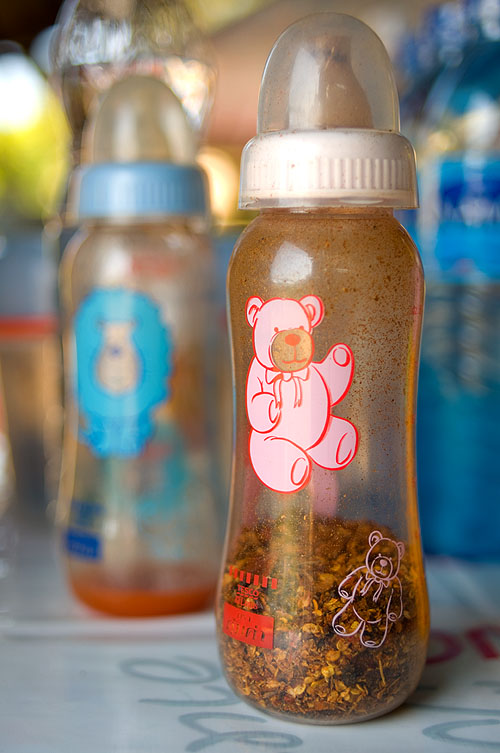 Seen at a restaurant in Baan Huay Kon, Nan.
Seen at a restaurant in Baan Huay Kon, Nan.